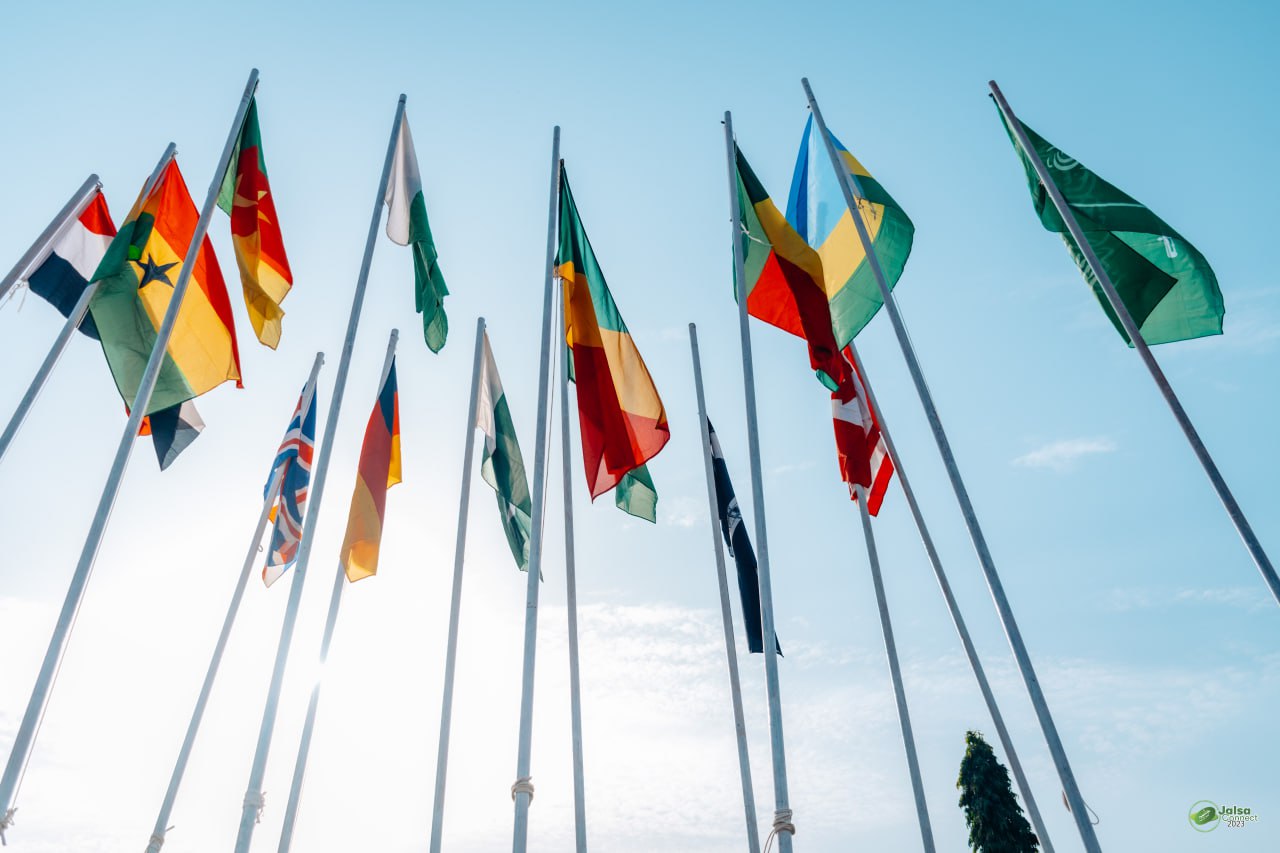By Sulaimon Abdul Hakeem
INTRODUCTION OF FLAGS
A flag is a distinctive piece of fabric used as a symbol, a signalling device, or for decoration. While the origin of flags is unknown, flag-like symbols have been described as far back as 11th century BC and have been used by other ancient civilisations.
During the Medieval period, silk from China allowed a variety of peoples, such as the Arabs and the Norse, to develop flags which flew from poles. Developments in heraldry led to the creation of personal heraldic banners for rulers and other important people. Flags began to be regularly used on board ships for identification and communication in the Age of Sail. In the 18th century and onwards, a rising tide of nationalism around the world meant that common people began to regularly identify themselves with nation-states and their symbols, including flags. In the modern day, every national entity and many sub-national entities employ flags for identification.
Flag in Arabia
Before the advent of Islam, banners as tools for signaling had already been employed by the pre-Islamic Arab tribes and the Byzantines. Early Muslim army naturally deployed banners for the same purpose. Early Islamic flags, however, greatly simplified its design by using plain color, due to the Islamic prescriptions on aniconism. According to the Islamic traditions, the Quraysh had a black banner and a white-and-black banner. It further states that Muhammad had a banner in white nicknamed “the Young Eagle” ( al-ʿuqāb); and a flag in black, said to be made from his wife Aisha’s head-cloth. This larger flag was known as the “Banner of the Eagle” ( al-rāyat al-ʿuqāb), as well as the “Black Banner” (Al-rāyat as-sawdāʾ). In the Islamic tradition, Muhammad used the white flag to represent both the leader of the Muslim army and the Muslim state.
Liwa-e-ahmadiyyah (Flag Of Ahmadiyyah )
It was the year 1939 during Khilafat Silver Jubilee of Hazrat Mirza Bashirudeen Mahmud Ahmad (Khalifatul Massih II). During this time came the suggestions that people celebrate different occasions, therefore as the first jubilee of khilafat of Hazrat Muslih Mau’ud (ra) within this blessed institution. Almighty Allah has stated in the holy Quran that:
“And remember also the time when your Lord declared, if you are grateful, I will surely bestow more favour on you.”
(Surah Ibrahim verse 8)
So it was deemed fit to put in place some programmes to commemorate this historical milestone. One of those things which was done to show gratitude towards Allah for this great achievement is the Liwa-e-Ahmadiyyah.
SIGNIFICANCE OF LIWA-E-AHMADIYYAH
It is known in history that communities do have flags that stand to symbolize the peace and harmony of its people. The Holy Prophet Muhammad (saw) gave his companions a flag. During the battle of Khaibar, the Holy Prophet Muhammad (sa) said that “today I will give the flag of Islam to a person who is friend to Allah and his Messenger and Allah and his Messenger are his friends.” So the Holy prophet gave the flag of Islam to Hazrat Ali (ra).
When Hazrat Muslih Mau’ud (ra) raised the suggestion of the flag among the Consultative body, the first thing that was deliberated on was about the design of the flag. A committee was formed for this purpose consisting of Hazrat Mirza Bashir Ahmad Sahib (ra), Hazrat Mir Muhammad Isaac Sahib (ra) and Hazrat Mirza Nasir Ahmad Sahib (ra). The committee members individually made their designs on papers which was then presented to Huzur (ra). Huzur (ra) examined those designs after which the Liwa-e-Ahmadiyyah take shape. There are various narrations in the Hadith that indicate the flag of the Holy Prophet Muhammad (sa) to be in black and white colors so the color of Liwa-e-Ahmadiyyah was in black and white.
It has a black background while Minaarat-ul-Massih in white color is drawn standing in the middle with a crescent and star at one side of it while a full moon at another side.
The preparation of Liwa-e-Ahmadiyyah carries with it a passionate historical significance. This is because it was all financed by the companions of the Promised Messiah (as), it was said that even if it was a rupee or a dollar that could be afforded by a companion it would be accepted, in fact its preparation was done by the hands of both male and female companions of the Promised Messiah (as). The cotton that was used for the flag was planted, irrigated and harvested by Hazrat Main Faqir Muhammad Sahib (ra), after it was brought to Qadian Hazrat Ummul Mu’mineen (ra) (wife of the Promised Messiah), Hazrat Nawab Mubarakah Baigham Sahibah (ra) (Daughter of the Promised Messiah), Hazrat Sayyidah Amatul Hafiz Baigham Sahibah(ra) (daughter of th Promised Messiah), Hazrat Baigham Sahibah (ra) wife of The first khalifa (as), the wives of Hazrat Muslih Mau’ud all helped in weaving the yarn to create fabric. Later, those companions that knew how to make clothes came to Qadian and Talwindi to make clothes. This clothes was cut into the needed size and sent to Lahore to print on it according to the flag design needed.
Generally, flags are made from fragile and light fabrics but Liwa-e-Ahmadiyyah was made of a heavy and thick material. The Liwa-e-Ahmadiyyah was completed few days to the Jalsa Salana of Khilafat Jubilee (Khilafat of Hazrat Muslih Mau’d) in the year 1939.
Given the background of Liwa-e-Ahmadiyyah, we can all see the reason why Allah has continued to help in holding it high and flying it across nations and borders. This flag soar high at every occasion of the Jama’at especially at the occasion of Jalsa Salana.
Written by Sulaimon Abdul Hakeem
Murabi Silsila
Muhtamin Tarbiyah MKAN


